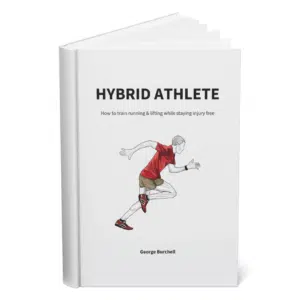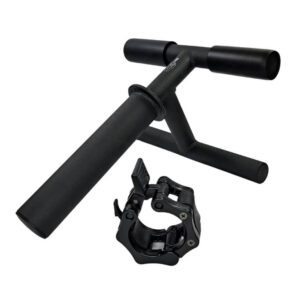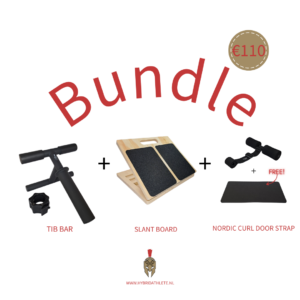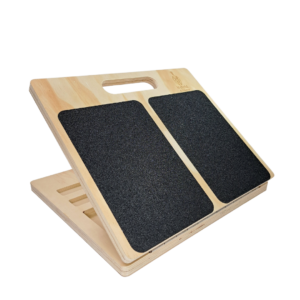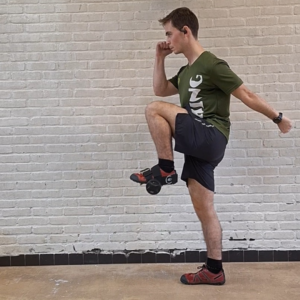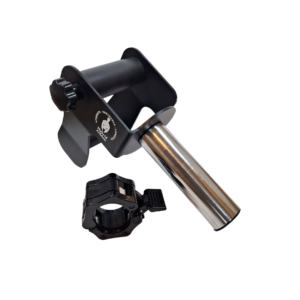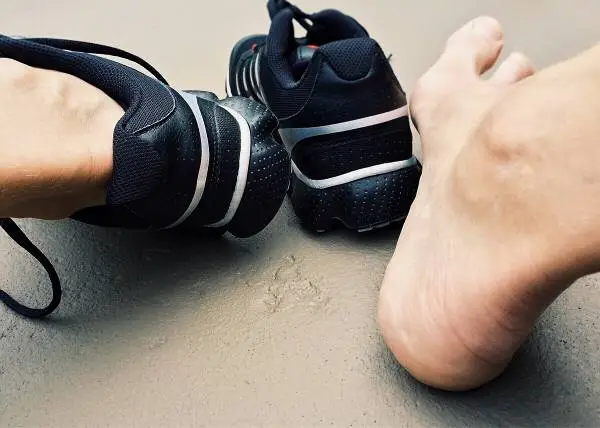
Zero-drop shoes, aka minimalist shoes, aka barefoot shoes, have found their way into so many sports and athletic disciplines. And no wonder.
With (almost) direct contact with the ground, we’re able to execute any movement in a more stable manner. And, since going barefoot in modern society isn’t exactly a thing, barefoot shoes is the way to go.
But, it’s not as simple as buying your pair of Xero’s, putting them on, and getting at it. It takes some time to prepare your foot, especially if you’ve worn cushioned shoes throughout your life.
And that’s exactly what we are talking about – how to prepare for the transition to zero-drop shoes.
Table of Contents
Testing Before The Switch
Zero-drop shoes accentuate the dorsiflexion of the foot, but not at the ankle only. Your toes need to be prepared as well. It’s nothing overly complicated, but to fully transition, you need to consider a few of these factors first. Sit down in a 90/90 (90° both at the knee and ankle) position with your heel down, and do these tests:
- How mobile are your ankles?
If you can freely move your knees over your toes without lifting the heel (for about 6 inches) you’re good to go. If not, it’s time for some ankle mobility work. - Can you lift your big toe up (dorsiflexion) to about 30° without help? This is a great indicator of the condition of your foot arches.
- Now, test your other toes – keep the big toe on the ground and raise your other toes. If they curl, your feet have probably been conditioned by narrow-toe-box shoes.
- How’s your balance? The best test is the one-legged stand – if you can stand on each leg for at least 30 seconds, you’re good.
Why not wear zero-drop all the time right away?
While your instincts may tell you it’s a good idea to fully transition to minimalist shoes as soon as they arrive – don’t let it win.
Cushioned footwear and a sedentary life impacted how our feet work, so you will have to introduce zero-drop shoes step by step (no pun intended).
Thanks to the zero-drop heel-to-toe sole, and the wide toe box, your feet will need a period of adaptation. But the bulletproofing and injury-prevention benefits are more than worth it.
You will have to relearn how to run and walk, essentially.
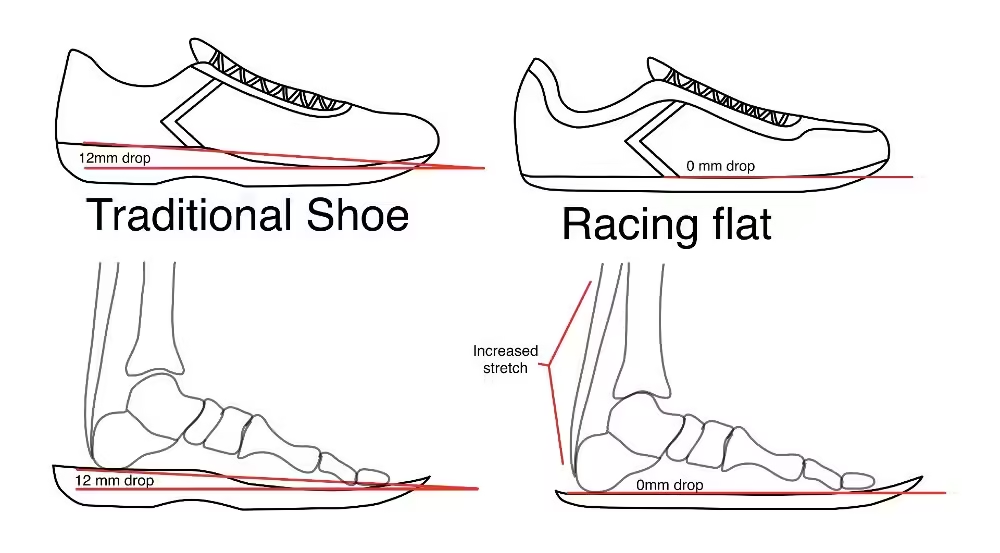
6 tips for when you start wearing zero drop shoes (training and everyday life)
- Firstly, take off your shoes as often as possible. Around the house, in the garden, on the beach – walk barefoot wherever possible.
- Now, you need a pair of high-quality minimalist shoes. At Hybrid Athlete, we cannot recommend Xero shoes enough.
- Start wearing your zero-drop shoes on your rest days – strolls around the block, morning walks, doing house chores.
- While your body naturally adapts (notice how we said “body” not just “feet”) you need to get on a strength/stretch regimen (at least 3 times a week):
- Intrinsic foot strength
- Calf strength and mobility
- Tightness management for the foot arches, calves, and ankles
- Dynamic balance work
- It’s time to take your zero-drop shoes for a run. Start with running 10% of your runs in barefoot shoes. You will have to rethink and adapt your gait and cadence. Shorten your stride, and limit your cadence to around 180 steps per minute. No need to focus on forefoot landing at this point. With no heel-to-toe drop, your body will naturally lean towards it. Land softly, with a slight forward lean.
- Slowly increase that 10% while running, over a 3-month period. If you go overboard, you will certainly start feeling pain in your weak points. For some, it’s the calves, for others, it’s the ball of the foot or the Achilles tendon. All in all, you should not run or exercise through pain.
Start Slow, Build Your Way Up, And Take It Down A Notch When Needed
If your feet suffer, you won’t be able to do much with your body. Remember – minimalist shoes are the proper footwear for running, lifting, and everything in between, but you can’t force the change.
If you feel discomfort in your feet, ankles, calves, or knees – back off a bit and build your way up. It’s not about wearing barefoot shoes only – you need to work on your knees-over-toes range, foot strength, and overall body balance.
But, in the end, switching to zero-drop shoes is one of the best things you can do for your body. By relying on your natural shock absorbers (muscles, ligaments, and tendons in your lower leg), you allow your body to move better in every direction.
Don’t wait anymore, go barefoot ASAP!
Get the Best Injury-prevention Exercise Equipment:
GET THE BEST INJURY-PREVENTION TRAINING EQUIPMENT:
Above all, a storyteller. Then comes marketing, branding, writing music, powerlifting, and woodworking.

